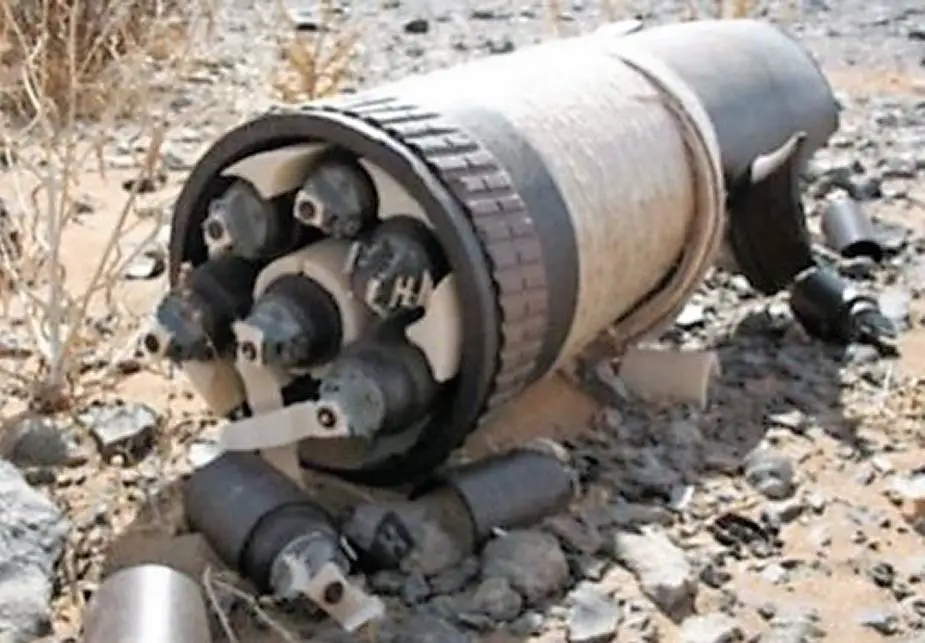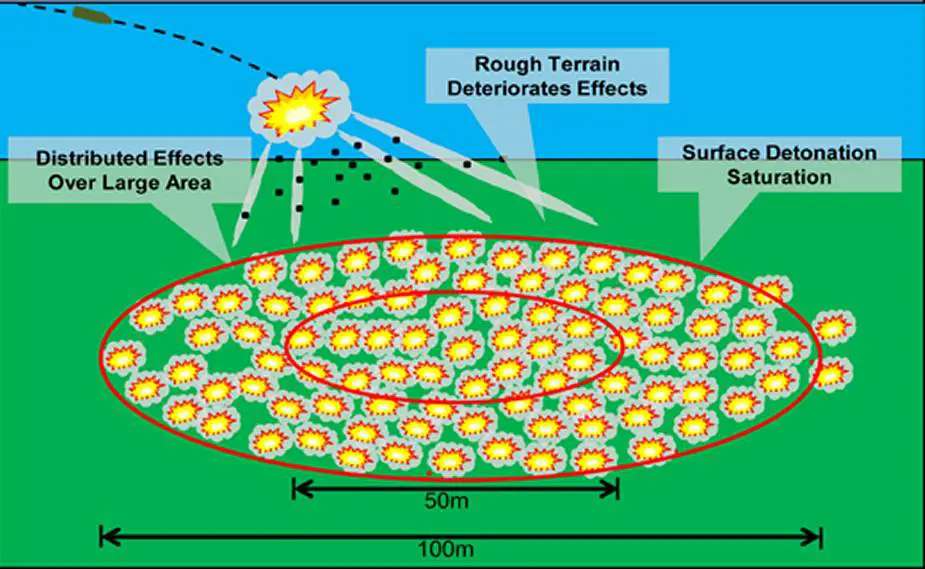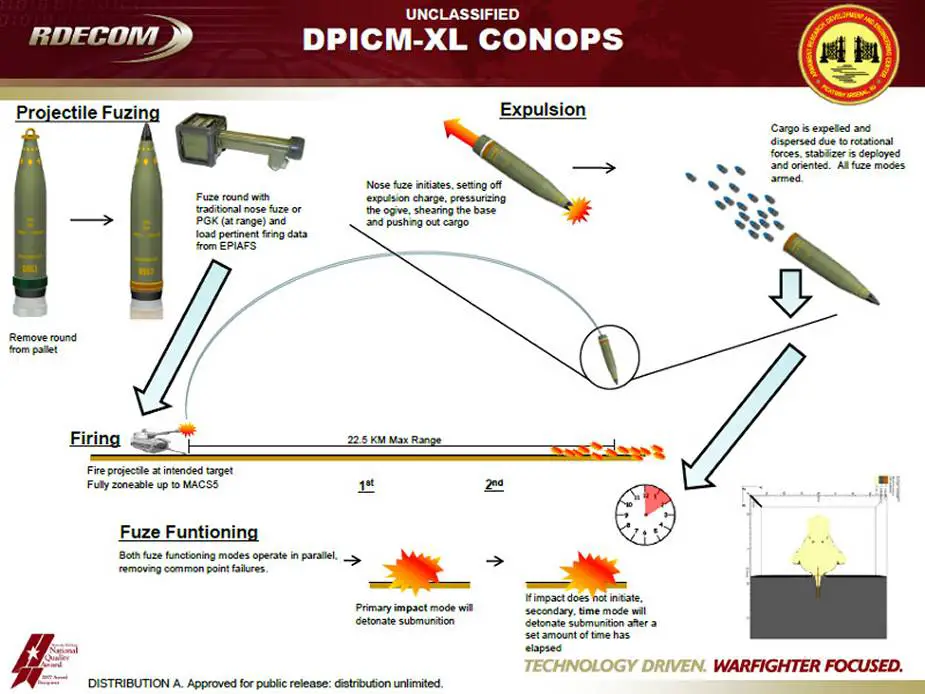Breaking news
Turkey supplying Ukraine army with Cold War-era DPICM cluster ammunition.
According to Jack Detsch in Foreign Policy, Turkey began sending Ukraine a form of U.S.-designed, artillery-fired cluster rounds in late 2022, giving Kyiv a powerful—but controversial—weapon to destroy Russian tanks and kill troops on the battlefield.
Follow Army Recognition on Google News at this link

Cluster ammunition having failed to spread its submunitions (Picture source: UN)
Turkey began sending the first batches of so-called dual-purpose improved conventional munitions (DPICMs) in November 2022, which were made during the Cold War era under a co-production agreement with the United States. As Jack Detsch recalls, this kind of ammunition is designed to destroy tanks by bursting into smaller submunitions, which can linger on the battlefield for years if they do not immediately explode. Each round scatters about 88 bomblets. The United States is barred from exporting DPICMs under U.S. law because of its high dud rate.
Turkey has sought to keep this quiet for months, Jack Detsch writes, while it has been supporting Ukraine with armed Bayraktar TB2 drones that helped break Russia’s advance on Kyiv. Simultaneously, Turkey was purchasing Russian weapons for itself, angering NATO in the process.
“After the U.S. denied [Ukraine] access to cluster munitions, Turkey was the only place they could get them,” said one source who spoke on condition of anonymity, Jack Detsch reports. “It just shows how even as Turkey cozies up to Russia in some respects, it’s become a really important supporter for Ukraine militarily”. Turkey, like the United States, is not a member of the Convention on Cluster Munitions.
Neither the Turkish Embassy in Washington nor the Ukrainian defense ministry responded to Foreign Policy’s request for comment. But Turkey’s delivery of DPICMs showcases how Ankara has played an outsized role in supplying weapons to Ukraine to break Russia’s full-scale invasion at critical moments in the war since Russian President Vladimir Putin ordered the assault in February 2022.
Although Turkey has not shared information on the quantities of cluster munitions in its stockpile, the Ankara-based Mechanical and Chemical Industry Corporation (MKE) has produced an extended-range artillery projectile in the past that can be fired out of 155 mm cannons with self-destructing DPICM submunitions as well as similar projectiles that are under license from the United States. Roketsan, another major Turkish weapons producer, once made TRK-122 rockets for 122 mm artillery systems that also scatter DPICM submunitions. Slovakia, Chile, and the United States have transferred cluster munitions to Turkey in the past, Jack Detsch reports.
But the move still is a reversal of sorts for Turkey, after it made pledges to the international disarmament community that it would not use cluster munitions. In a letter sent to the president of the Convention on Cluster Munitions, a Geneva-based international organization, in October 2021 and obtained by Foreign Policy, Turkey insisted that it had not used, produced, imported, or transferred cluster munitions since 2005—when the convention was implemented—and did not intend to do so in the future.

DPICM M483A1 area effects (Illustration source: eArmor)
People who have advocated for the United States to send DPICMs have insisted that it would be the most effective way to root out Russian trench lines, which are not reinforced or covered, in the open terrain of the Donbas. And the need is compounded, those advocates said, by U.S. stockpiles already running low on high explosive artillery rounds. Ukrainian forces have used cluster munition rockets on at least two occasions.
“For every fourth [artillery] round, you’re killing somebody. I think DPICM is going to show probably 20 times that,” said Dan Rice, president of Thayer Leadership, an executive leadership development organization, who is also serving as an advisor to Ukraine’s military chief. “So for each round you fire, you’ll have 10 dead Russians. You’re going to see the efficiency of DPICM and effectiveness, which will also affect Russian morale.”

New kind of alternate cluster ammunition (Illustration source: RDECOM)
The DPICM, which can be fired from standard artillery pieces, is about 5 to 10 times more lethal than the standard high-explosive rounds that the U.S. and other nations have already sent to Ukraine. Ukraine has also asked for BONUS cluster rounds from Sweden and small-diameter munitions that can be launched by HIMARS.
The U.S. has worked to develop a so-called alternate warhead round for light multiple rocket launchers that fire tungsten fragments instead of explosive submunitions, Jack Detsch writes. “That submunition is notorious for its unreliability and its inaccuracy,” said Mark Hiznay, a senior researcher in the Arms Division at Human Rights Watch. “So you’re creating a fratricide situation and a long-term, post-conflict recovery liability.”
The U.S. Defense Department has about 3 million DPICM rounds in its stocks, dating back to the end of the Cold War, when American war planners envisaged using antipersonnel mines to stop a Soviet tank advance into mainland Europe, Jack Detsch recalls. Under plans envisioned by Ukrainian military advisors, DPICMs would be used against known Russian military targets, confirmed by drones, and cleaned up by unexploded ordnance teams after they are fired but before any areas are reopened to civilians. Unlike traditional landmines, cluster munitions aren’t often neatly planted in rows that can be easily surveyed and cleared. Rather, they scatter more randomly when fired and have a high dud rate. Experts worry that because of its small size, akin to a D-cell battery, they are too unsafe to destroy en masse, and innocent civilians could mistakenly pick them up.

155 BONUS is a 155 mm artillery munition developed in cooperation between Bofors of Sweden (BAE System) and Nexter of France, designed for a long-range, indirect fire top attack role against armored vehicles (armored personnel carriers, infantry fighting vehicles and main battle tanks) (Picture source: Nexter/Bofors)




























